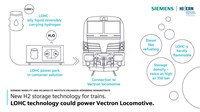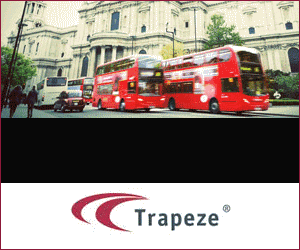
The use of hydrogen technology in rail transport is becoming increasingly important as a solution for reducing CO2 emissions and helping to meet climate targets. In recent years, Siemens Mobility has developed a hydrogen-powered train, the Mireo Plus H. In this technology, hydrogen is tanked in gas form and must be kept under high pressure in order to achieve the required high density.
The Helmholtz Institute Erlangen-Nuremberg for Renewable Energy (HI ERN) is a leader in the field of so-called LOHC technology. In this process, an organic carrier liquid absorbs hydrogen and releases it only when needed. The hydrogen is thus chemically bound and can’t escape in a gas form. This way, it can be prepared and stored safely, and transported inexpensively. Storage under high pressure or at low temperatures is no longer necessary. A special advantage of the technology: LOHC is also suitable for the on-board generation of electrical power in mobile applications like trains.
About Siemens Mobility
.png) Siemens Mobility is a separately managed company of Siemens AG. As a leader in transport solutions for more than 160 years, Siemens Mobility is constantly innovating its portfolio in its core areas of rolling stock, rail automation and electrification, turnkey systems, intelligent traffic systems as well as related services. With digitalization, Siemens Mobility is enabling mobility operators worldwide to make infrastructure intelligent, increase value sustainably over the entire lifecycle, enhance passenger experience and guarantee availability. In fiscal year 2020, which ended on September 30, 2020, Siemens Mobility posted revenue of €9.1 billion and had around 38,500 employees worldwide
Siemens Mobility is a separately managed company of Siemens AG. As a leader in transport solutions for more than 160 years, Siemens Mobility is constantly innovating its portfolio in its core areas of rolling stock, rail automation and electrification, turnkey systems, intelligent traffic systems as well as related services. With digitalization, Siemens Mobility is enabling mobility operators worldwide to make infrastructure intelligent, increase value sustainably over the entire lifecycle, enhance passenger experience and guarantee availability. In fiscal year 2020, which ended on September 30, 2020, Siemens Mobility posted revenue of €9.1 billion and had around 38,500 employees worldwide




Comments
There are no comments yet for this item
Join the discussion